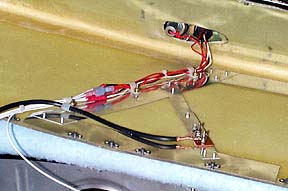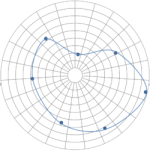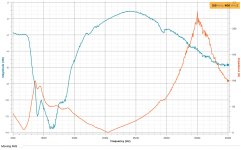1. Bob, i didn’t make my point very clearly.
2. For GA and other “light” aircraft typically only one anntenna is used for ILS, for part 121 transport aircraft separate antenna are used for the VHF localizer and GS fed directly to the individual receivers within the ILS system. This also helps significantly with the issue of rejecting cross polarization to improve signal to noise ratios.
3. My concern about using any non TSO’d antenna for IFR is mostly about initial capture and establishment on the localizer and initial capture and establishment on the glideslope.
4. The transition from en-route to the approach segment is - its where most of the accidents happen or can be traced back to originating.
KT
1. I guess not. You said the angular position was determined by phase differences between the two (90 Hz and 150 Hz) signals. Since the modulation frequencies are different, it doesn't even make sense to talk about a phase difference. Perhaps you were thinking of VORs, where the phase difference between two 30 Hz signals is proportional to the radial? Also, "the max signal is along the approach path" is unimportant. What is important is that one signal, say the 90 Hz one, is offset from the approach path, and the other (say the 150 Hz) is offset by an equal but opposite direction. The CDI reading is just proportional to the different signal strengths of the two signals. No phases are involved. You also said you wouldn't trust it to Cat I minimums. But in fact that close in the signal strength is so high that a coat hangar antenna will work.
2. There is very little cross polarization. As proof, note the uniformly bad reports of using an Archer as a com antenna (which needs vertical polarization), unless the antenna can be tipped off the horizontal plane. And since both Loc and GS signals are horizontally polarized, using one antenna vs two does not help reject vertically polarized noise. One thing that is true, that you didn't mention, is that the gamma match is not optimally positioned for the GS, operating at triple the frequency. But,...
The bottom line is that modern receivers are so sensitive, that the signal strength doesn't matter much. What maters is the signal to noise ratio. If having an inefficient antenna lowers the signal, but also lowers the external noise, it's all good - until the signal gets so weak that internal noise (generated by the 'front end' of the receiver's electronics) starts to mask the signal. The internal noise figures for modern receivers are so low that this means a truly horrible antenna.
3. This is essentially correct. If the antenna sensitivity falls off so badly at 30 deg to the nose that the signal gets lost in the noise, you'll have a problem on intercept. But ILS's are all made to the same specs, and, as proven by quite a few Archer users, the antenna works fine at 30 deg off the nose for standard ILS signals. Now, maybe there's an ILS in Tim-buck-too that requires an intercept 50 nm out, I don't know about that. But the antenna even works at 90 deg off the nose, "looking" thru the fuselage, for somewhat distant VOR signals.
4. I have never seen a single NTSB report that blamed an accident on an inadequate ILS signal during the intercept. Lots of other problems, for sure, but not that.







